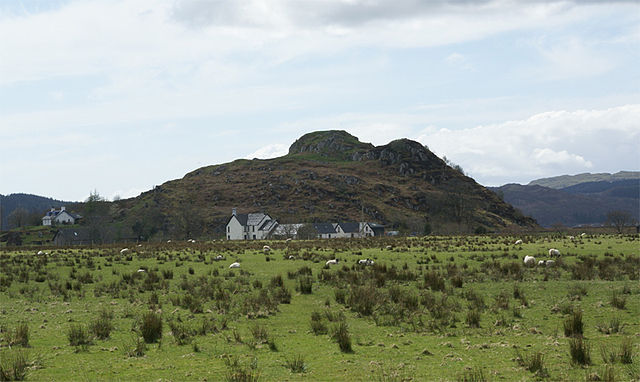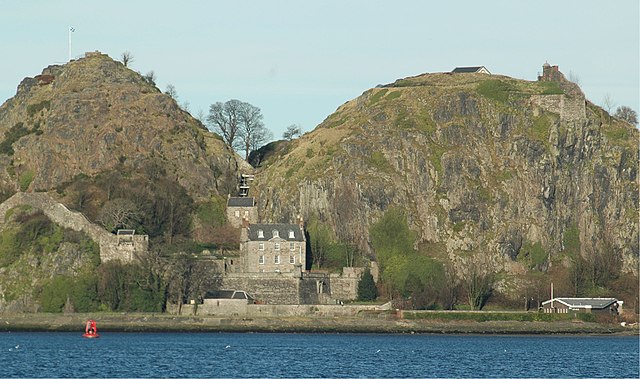Origins of the Kingdom of Alba
The origins of the Kingdom of Alba pertain to the origins of the Kingdom of Alba, or the Gaelic Kingdom of Scotland, either as a mythological event or a historical process, during the Early Middle Ages.
The Stone of Scone in the Coronation Chair at Westminster Abbey, 1855, was the ceremonial coronation stone of Scotland's Gaelic kings, similar to the Irish Lia Fáil.
Sueno's Stone, located in Forres, in the old kingdom of Fortriu. This gigantic, probably post-Pictish monument, marks some kind of military triumph.
Scotland in the early Middle Ages
Scotland was divided into a series of kingdoms in the early Middle Ages, i.e. between the end of Roman authority in southern and central Britain from around 400 AD and the rise of the kingdom of Alba in 900 AD. Of these, the four most important to emerge were the Picts, the Gaels of Dál Riata, the Britons of Alt Clut, and the Anglian kingdom of Bernicia. After the arrival of the Vikings in the late 8th century, Scandinavian rulers and colonies were established on the islands and along parts of the coasts. In the 9th century, the House of Alpin combined the lands of the Scots and Picts to form a single kingdom which constituted the basis of the Kingdom of Scotland.
The so-called Daniel Stone, Pictish cross slab fragment found at Rosemarkie, Easter Ross
Dunadd Fort, Kilmartin Glen, probably the centre of the kingdom of Dál Riata
Looking north at Dumbarton Rock, 'fort of the Britons', the chief fort of Strathclyde from the 6th century to 870 when it was taken by the Vikings
St. Aidan, founder of Lindisfarne Priory






